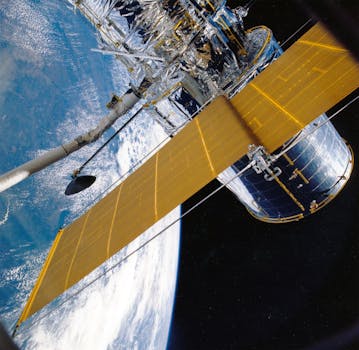
Updates from Above: Essential Insights into the Latest in Satellite Telecommunications
Satellite Telecommunications has become a vital component of modern communication, providing services that range from mobile networks to broadband internet. As technology advances, the field of satellite telecommunications continues to evolve, offering new and innovative solutions to meet the increasing demand for connectivity. In this article, we will delve into the latest updates and insights from the world of satellite telecommunications, exploring how these developments are shaping the future of global communication.
Introduction to Satellite Telecommunications
Satellite telecommunications involve the use of artificial satellites to transmit and receive signals, providing communication services over long distances. This technology has been in use for decades, but recent advancements have significantly improved its capabilities, making it a crucial part of modern communication infrastructure. From providing internet access to remote areas to enabling mobile networks, satellite telecommunications play a vital role in connecting the world.
Advancements in Satellite Technology
One of the most significant advancements in satellite technology is the development of high-throughput satellites (HTS). These satellites offer faster data speeds and greater capacity, making them ideal for applications such as broadband internet and mobile networks. HTS satellites use multiple spot beams to cover a specific area, increasing the overall throughput and reducing interference. This technology has enabled the widespread adoption of satellite-based services, providing connectivity to areas where traditional infrastructure is lacking.
Low Earth Orbit (LEO) Satellites
Another significant development in satellite telecommunications is the emergence of Low Earth Orbit (LEO) satellites. LEO satellites orbit the Earth at an altitude of approximately 2,000 kilometers, which is much lower than traditional geostationary satellites. This lower altitude reduces latency and improves signal strength, making LEO satellites ideal for real-time applications such as video conferencing and online gaming. Companies such as SpaceX and OneWeb are launching constellations of LEO satellites to provide global coverage and high-speed connectivity.
5G and Satellite Telecommunications
The introduction of 5G networks has also had a significant impact on satellite telecommunications. 5G networks require a large amount of bandwidth to provide high-speed services, and satellite telecommunications can help meet this demand. Satellite-based 5G services can provide coverage in areas where traditional infrastructure is lacking, enabling the widespread adoption of 5G technology. Additionally, satellite telecommunications can be used to backhaul traffic from cell towers to the core network, reducing the need for fiber-optic cables and improving network reliability.
Challenges and Future Directions
Despite the many advancements in satellite telecommunications, there are still several challenges that need to be addressed. One of the major challenges is the issue of space debris, which can pose a significant risk to operational satellites. Additionally, the increasing number of satellites in orbit can lead to congestion and interference, reducing the overall performance of satellite-based services. To address these challenges, the development of new technologies such as satellite-based propulsion systems and advanced antenna designs is crucial. These technologies can help reduce the amount of debris in orbit and improve the overall efficiency of satellite-based services.
Conclusion
In conclusion, the field of satellite telecommunications is rapidly evolving, with new technologies and innovations being developed to meet the increasing demand for connectivity. From the development of high-throughput satellites to the emergence of LEO satellites, these advancements are shaping the future of global communication. As the world becomes increasingly dependent on satellite-based services, it is essential to address the challenges facing the industry and develop new technologies to improve the overall performance and efficiency of satellite telecommunications.

